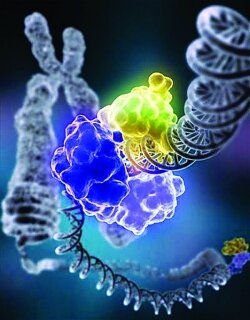Web Date: September 6, 2012
‘Junk DNA’ Not So Junky
News Channels: Biological SCENE
Keywords: genome, epigenetics, junk DNA

The first sequencing of the human genome about a decade ago showed that 2% of DNA coded for proteins and the rest seemed to represent “junk DNA” of unknown function. Studies by the worldwide Encode (Encyclopedia of DNA Elements) consortium now reveal that at least 80% of the genome contains areas that interact with regulatory proteins, switch processes on and off, can be transcribed into gene-regulating RNAs, or perform other functions. The findings, published in 30 open-access papers in Nature,Science,Genome Research,Genome Biology, and other journals, represent an advance in understanding how the genome works.
For example, the data “help explain how genetic variants that do not affect the structure of encoded proteins could affect a person’s susceptibility to disease,” says Encode member Ross C. Hardison of Pennsylvania State University. Genomewide association studies had found disease susceptibility in noncoding regions of the genome, suggesting they were functionally significant. Encode data now fully support that contention.
“These papers represent a tectonic shift in our understanding of the intricate circuitry that makes the human genome work,” says Encode member Thomas D. Tullius of Boston University. “To me, the most exciting new insight is the central role that gene regulatory regions play in disease, opening the way for entirely new strategies for therapeutic intervention.”
Future Encode studies will provide additional details on genomic functions. But the current work already reveals that “there is very little, if any, junk DNA,” says Eric D. Green, director of the National Human Genome Research Institute, which helps fund Encode.
- Chemical & Engineering News
- ISSN 0009-2347
- Copyright © American Chemical Society